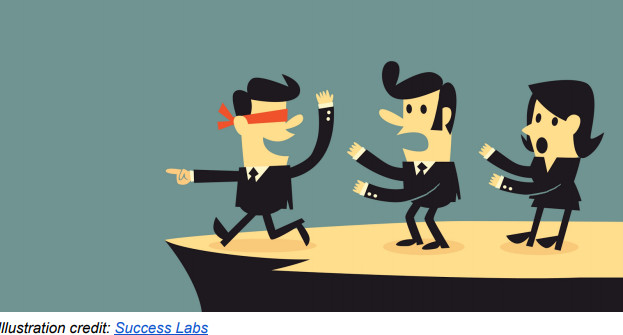
Why Good People Make Bad Decisions
Why Good People Make Bad Decisions, by Dr Alan Barnard, from my 2016 TOCICO International Conference notes. (Thanks to Dr Barnard for the graphics used below)
Dr. Alan Barnard has spent a lot of time researching people’s decision-making to better understand why we so often waste precious time making and repeating bad decisions, which wastes our scarcest resource – our limited attention. How? As he puts it, “We waste our attention in three ways:
1. We do things we shouldn’t (errors of commission)
2. Don’t do the things we should (errors of omission)
3. Often repeat these mistakes (errors of detection and correction)”
Dr Barnard analyzed bad decisions and found there were two types of bad decisions: unavoidable and avoidable. Further, he found three categories of avoidable bad decisions:
· Ineptitude, meaning I/we knew, but compromised instead
· Inertia, meaning I/we knew, but did not act
· Ignorance, meaning I/we did not know
In his research, Dr Barnard has identified five common causes for good people making bad decisions:
1. We don’t always pay attention to the right problem
2. We often either jump immediately to a solution or search for someone to blame, rather than working to understand the situation
3. Although one or more conflicts is usually underlying any significant problem, we tend to think that compromise is the only way out of any conflict (he believes there are always at least four viable options that are not compromises!)
4. We don’t always listen to our own intuition or to the concerns of others and thus very often risk implementing solutions that have negative consequences (which could have been prevented)
5. We often implement solutions without listing our assumptions and testing to see whether they actually do solve the problem.
He has developed an hypothesis of where to focus improvement to “reduce avoidable and consequential decision mistakes”. But it is also important to identify “unavoidable decision mistakes” so we don’t try to do root-cause analysis on these (e.g., confusing noise with signal)
Note that on the right side of the graphic above are five consequential decisions that knowledge of the system constraint can help us with, in terms of making better decisions.
“VUCCA” (in the graphic above) was a new acronym for me. Dr Barnard defines it as shown below and claims each is a common attribute of a complex world:
Dr. Barnard has developed, successfully tested, and refined the Pro-Con Cloud process (formerly Change-Matrix Cloud process) to help people better understand why we tend to resist good changes (that we know we should make) and over-react and often make bad decisions. I highly recommend this process for determining
· How to set ambitious but achievable goals
· How to judge the impact of changes on the system as a whole
· How to decide where to focus our limited resources to improve the total system
· How to decide what rules (policies, metrics, and behaviors) to use to optimize the system (not just sub-systems)
· How to decide when to change the rules


Founder and Principal at Mobilé 4 flow & innovation
2yOnly lately my attention was drawn to this article. Very helpful. My takeaway: when you know the constraint of a system, you exclude many options for action right away and minimize the number of avoidable mistakes automatically. And then, of course, focus on the constraint.